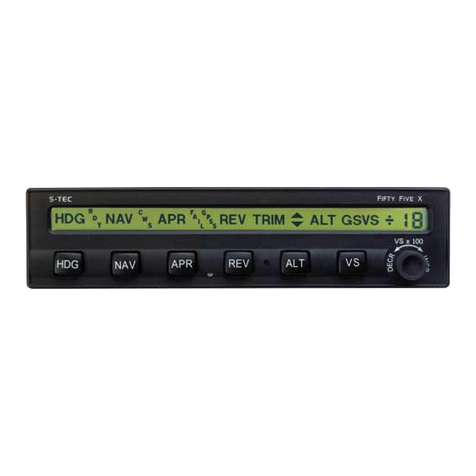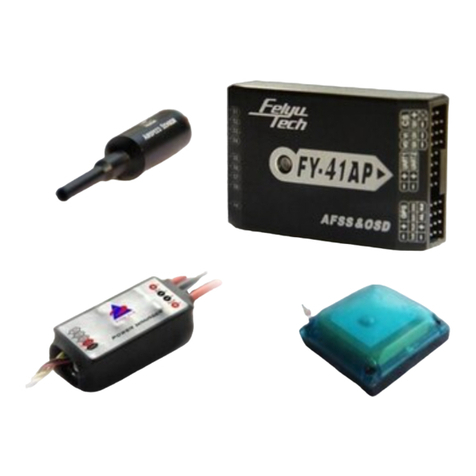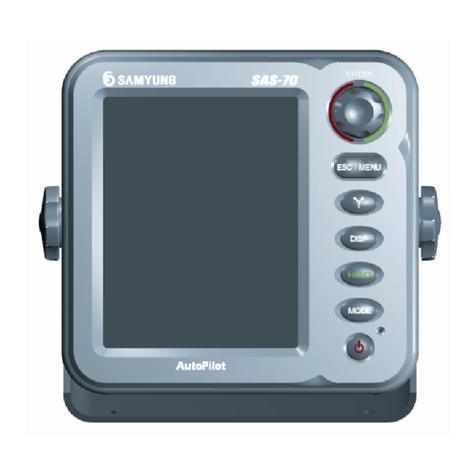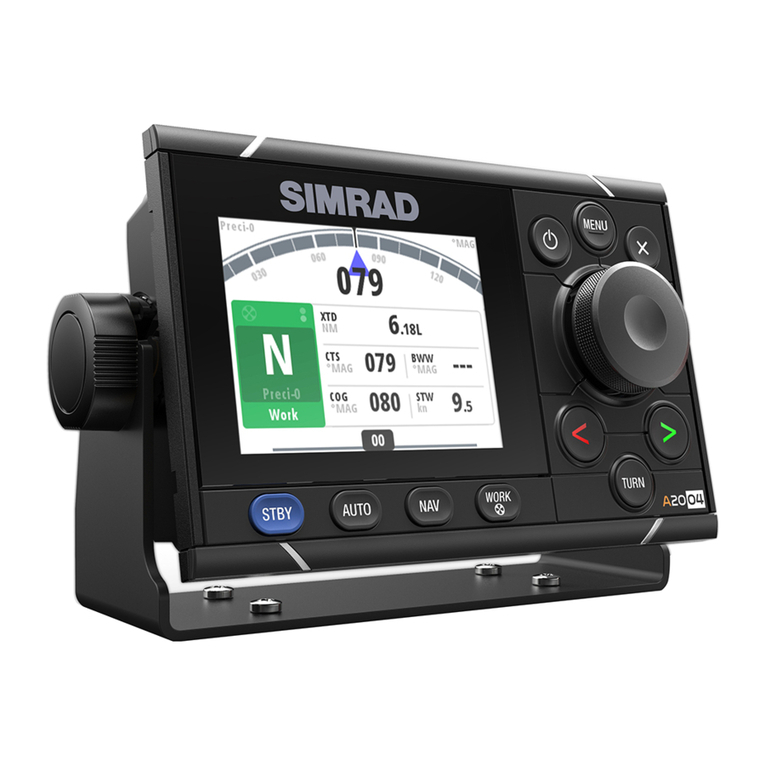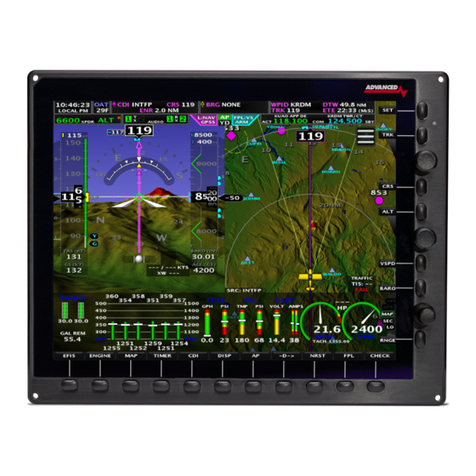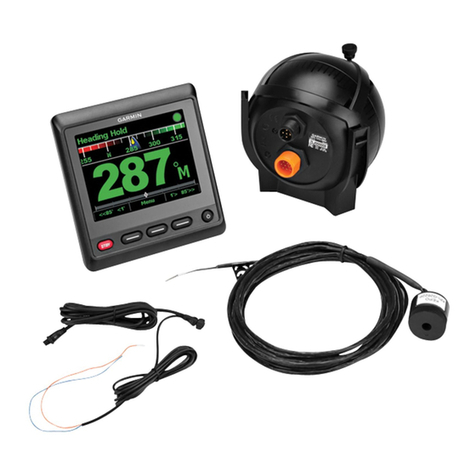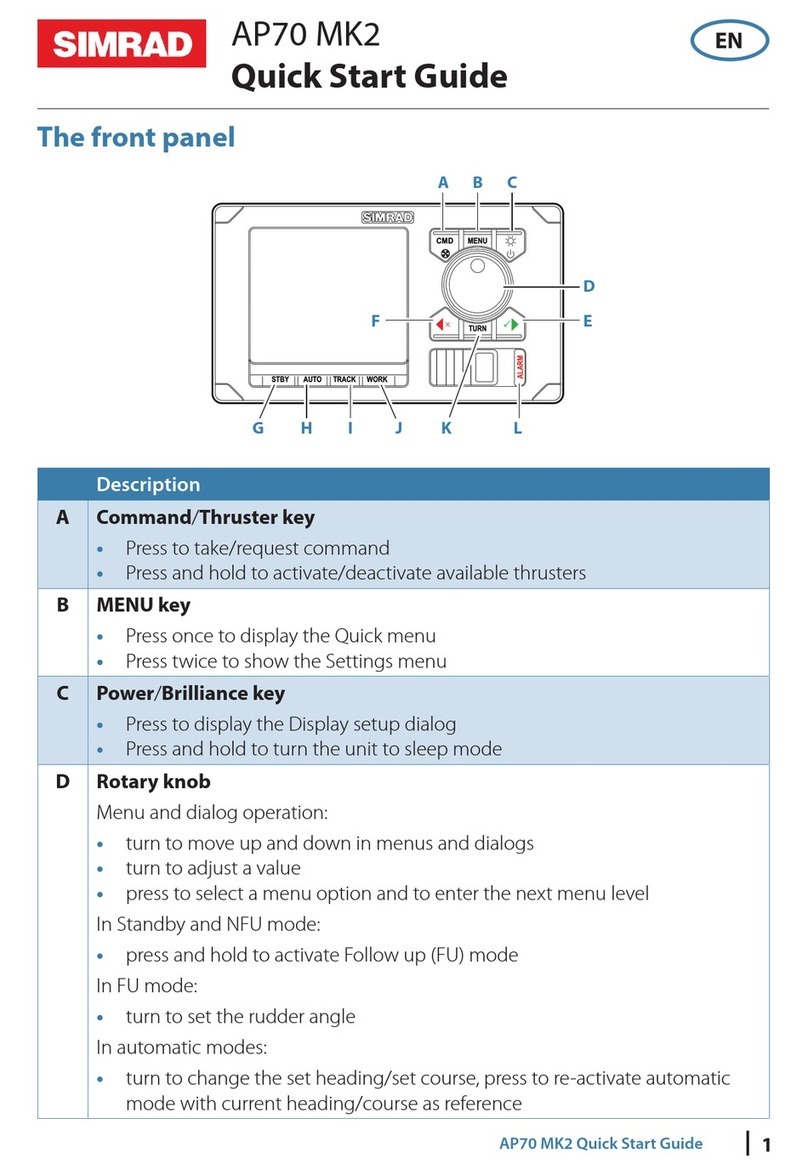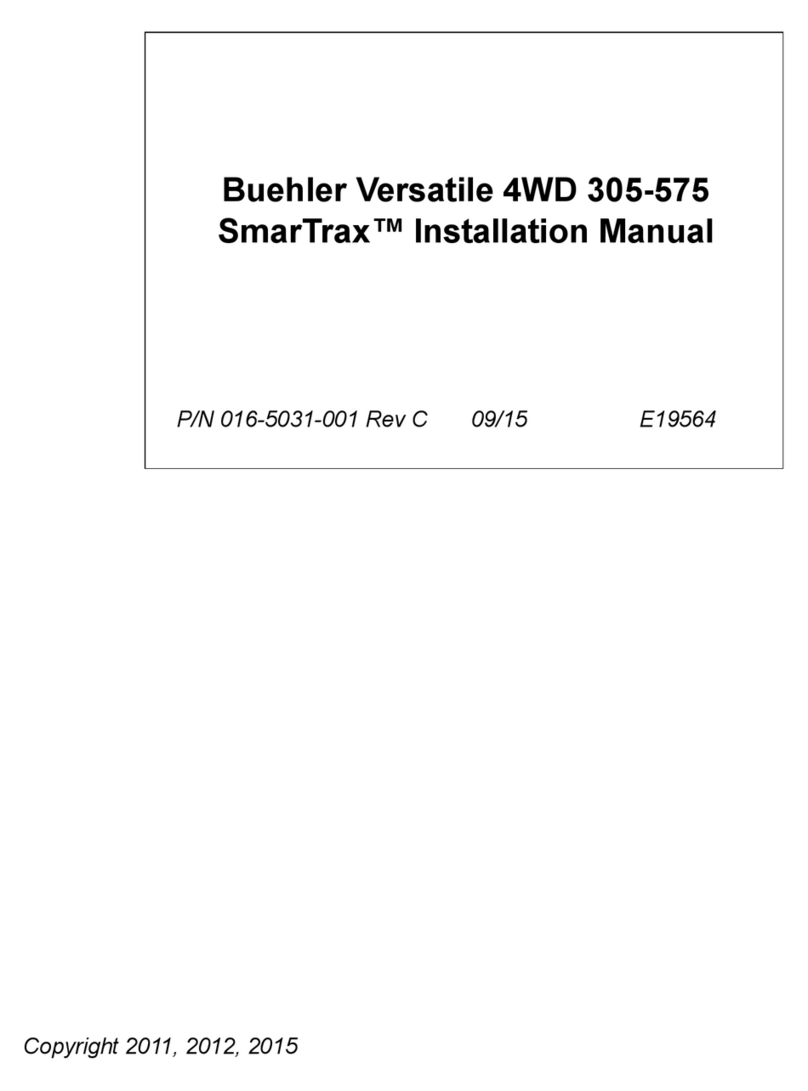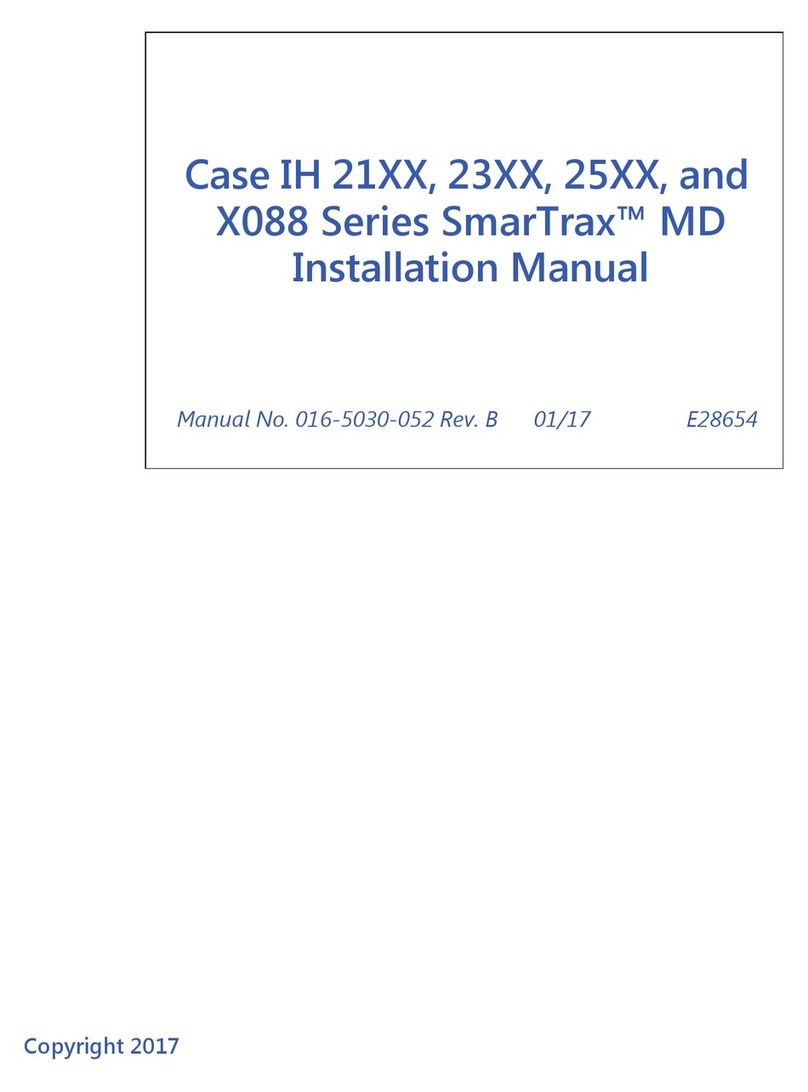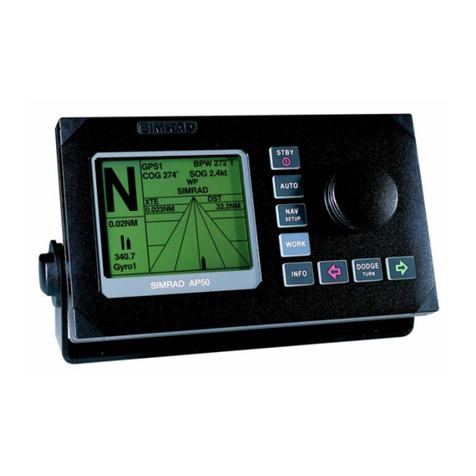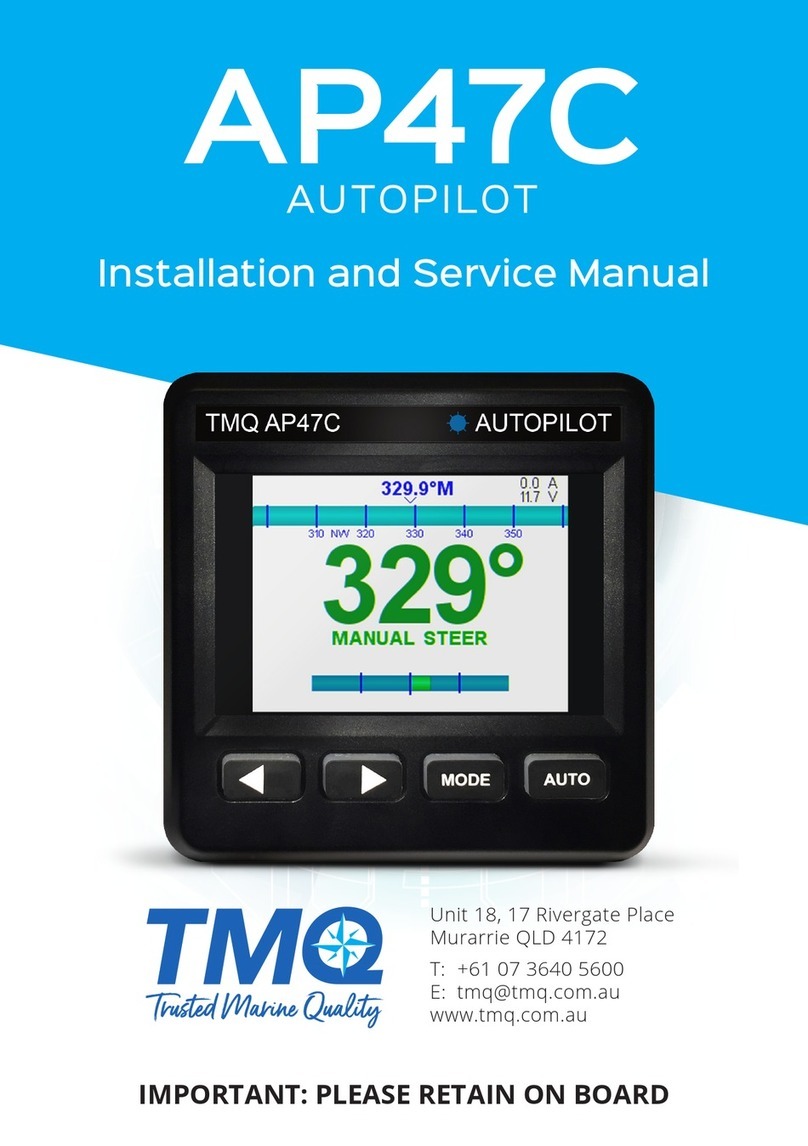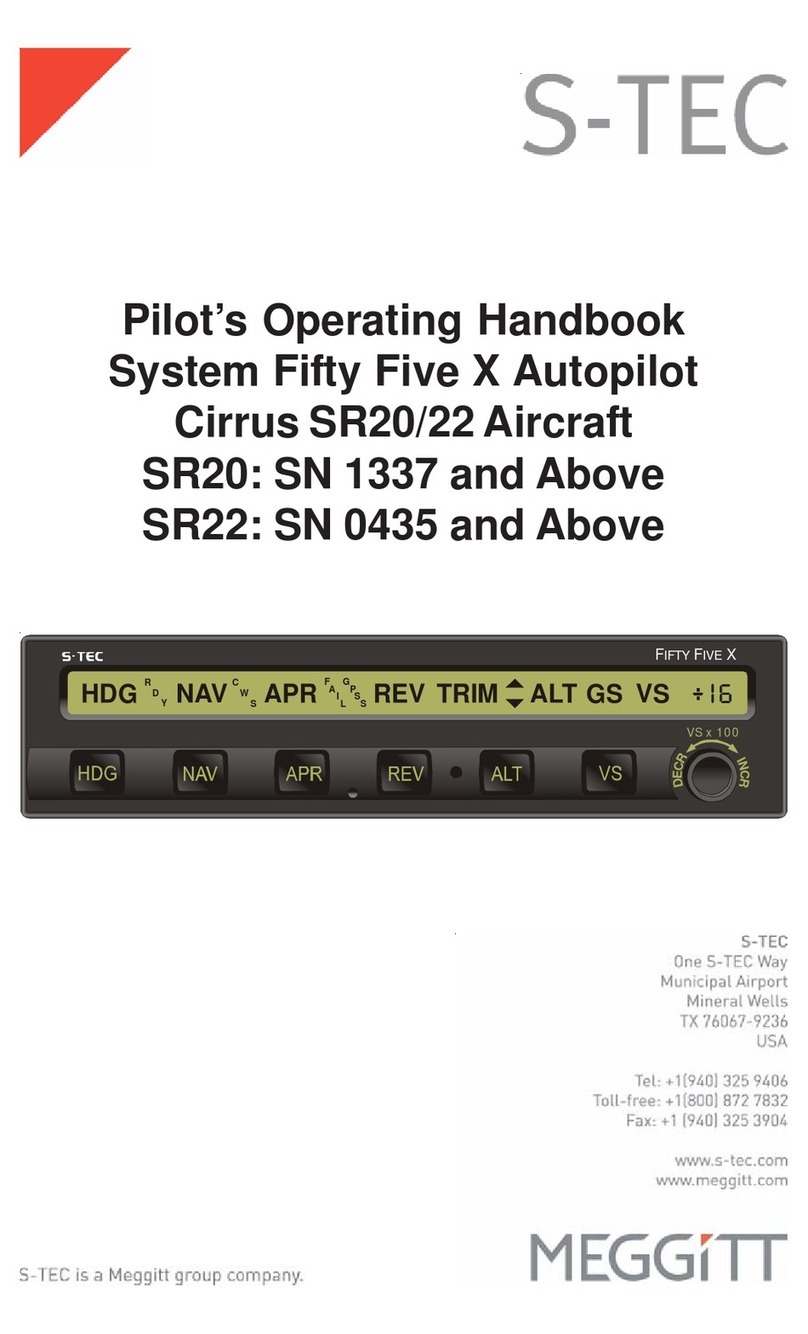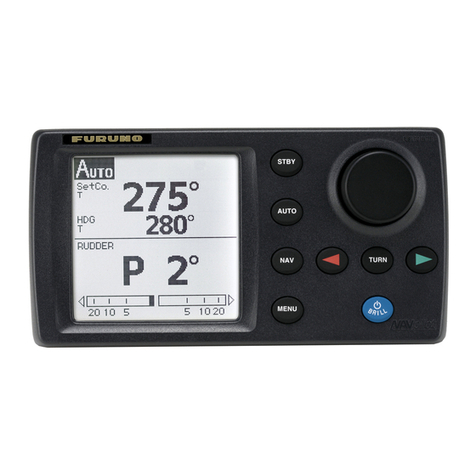MilViz KAP 140 Manual

1
MILVIZ PILATUS PC6 PORTER
KAP 140 Autopilot system
(Sources: KAP 140 Pilot’s guide – KAP 140 Installation Manual)
KAP 140 Two Axis with Altitude Preselect Operation - Introduction
The KAP 140 Autopilot System included in the Pilatus PC6 is a rate based digital autopilot
system offering smooth performance and enhanced features found only in more expensive
autopilots. This system brings digital technology and reliability into the light aircraft cockpit.
KAP 140 roll axis features include wing leveler, heading select and VOR/LOC intercept
and tracking. The KAP 140 can also be coupled to GPS and RNAV receivers as well. Roll
rate information is derived from the turn coordinator.
Pitch axis features include vertical speed, glideslope and altitude hold along with altitude
preselect option. Pitch information is derived from a pressure sensor and accelerometer.
Manual Electric Trim and Control Wheel Steering (CWS) optionals are also included and
full operative.
The KAP 140 Autopilot System operates independent of the aircraft’s artificial horizon.
Therefore, the autopilot retains roll stabilization and all vertical modes in the event of
vacuum system failure.
KAP 140 features in Pilatus PC6 version
HSI unit
YES
Turn Coordinator
YES
Automatic Electric Elevator Trim
YES
Manual Electric Trim
YES
FUNCTION MODES
ALT Hold (ALT); ALT Preselect/ALERT; Heading Select (HDG);
NAV (VOR/RNAV/GPS); Approach (APR); Glideslope (GS);
Back Course (REV); Wing Leveler (ROL); Vertical Speed Hold (VS)
Control Wheel Steering (CWS)
YES
Auto Capture
YES
Auto Track
YES
All Angle Intercept
YES
Auto 45-degree Intercept
NO
Remote Barometric Input
NO

2
Diagram - KAP 140 Pilatus PC6 version systems
Each system has a number of inputs: sensor outputs are shown in red;
combination inputs are shown in blue; display outputs are shown in orange;
and aircraft control shown in green.

3
System Technical Characteristics (In smooth air)
Maximum Bank Angles
Limited to standard rate turn.
Heading Stability
± 2°
VOR Crosswind Compensation
Up to 30° right or left
NAV/APR/REV Capture Capability
All angles
NAV/APR/REV Capture Computation
Scheduled by beam closure rate
NAV Track Computation
Scheduled by beam rate and deviation
APR/REV Track Computation
Scheduled by beam rate and deviation
NAV Tracking
System will track without large bank angles
keeping beam deviation to less than 1.0° of
VOR. Actual performance will depend
upon quality of VOR beam being received
LOC Tracking
System will track without large bank angles
keeping beam deviation to less than .25° of
LOC. Actual performance will depend upon
quality of LOC beam being received.
Vertical Speed Stability
± 150 feet per minute
Altitude Range
-- 1000 to 35,000 ft
Altitude Hold Stability
± 50ft
Altitude Overshoot
System will limit overshoot to less than 100
feet of selected altitude across the altitude
range of the aircraft. When armed prior to
the capture point.
Vertical Trim
Mode Continuous Discrete
ALH 500 FPM 20 Feet
VS 300 FPM/SEC 100 FPM
Glideslope Capture Computation
Scheduled by beam rate and deviation
Autopilot Disconnect Alerting
External Sonalert
Software version
03/01 and later

4
Power Application and Preflight Tests
KAP 140 Preflight Test
KAP 140 Preflight Test Complete
A preflight test is performed upon power application to the computer. This test is a
sequence of internal checks that validate proper system operation prior to allowing
autopilot engagement. The preflight test (PFT) sequence is indicated by “PFT” with an
increasing number for the sequence steps. Successful completion of self test is identified
by all display segments being illuminated (Display Test) and the disconnect tone sounding.
Following the preflight test, the red P warning on the face of the autopilot may illuminate
indicating that the pitch axis cannot be engaged. This condition should be temporary,
lasting no more than 30 seconds. The P will extinguish and normal operation will be
available.
Red P and R warnings may illuminate when the autopilot is not engaged. This can occur
when autopilot G limits have been exceeded during turbulence or aircraft maneuvering.
Autopilot engagement is locked out during red R illumination.

5
KAP 140 Two Axis with Altitude Preselect Operation
1. PITCH AXIS, (P) ANNUNCIATOR
- When illuminated, indicates failure of the pitch axis and will disengage the autopilot when
the failure occurs and not allow engagement of the pitch axis.
2. AUTOPILOT ENGAGE/DISENGAGE (AP) BUTTON
- When pushed and held for 0.25 seconds, engages autopilot if all logic conditions are met.
The autopilot will engage in the basic roll (ROL) mode which functions as a wing leveler
and in the vertical speed (VS) hold mode. The commanded vertical speed is be displayed
in the upper right corner of autopilot display area for three seconds after engagement or if
either the UP or DN button is pressed. The captured VS will be the vertical speed present
at the moment of AP button press. When pressed again will disengage the autopilot.
3. ROLL AXIS (R) ANNUNCIATOR
- When illuminated, indicates failure of the roll axis and will disengage the autopilot and not
allow engagement.
4. HEADING (HDG) MODE SELECTOR BUTTON
- When pushed, will arm the Heading mode, which commands the airplane to turn to and
maintain the heading selected by the heading bug on the DG. A new heading may be
selected at any time and will result in the airplane turning to the new heading.
Button can also be used to toggle between HDG and ROL modes.
5. NAVIGATION (NAV) MODE SELECTOR BUTTON
- When pushed, will arm the navigation mode. The mode provides automatic beam capture
and tracking of VOR, LOC or GPS as selected for presentation on the CDI. NAV mode is
recommended for enroute navigation tracking. NAV mode may also be used for front
course LOC tracking when GS tracking is not desired.
6. APPROACH (APR) MODE SELECTOR BUTTON
- When pushed, will arm the Approach mode. This mode provides automatic beam capture
and tracking of VOR, GPS, LOC, and Glideslope (GS) on an ILS, as selected for
presentation on the CDI. APR mode is recommended for instrument approaches.

6
7. BACK COURSE APPROACH (REV) MODE SELECTOR BUTTON
- When pushed, will arm the Back Course approach mode. This mode functions similarly to
the approach mode except that the autopilot response to LOC signals is reversed, and GS
is disabled.
8. ALTITUDE HOLD (ALT) MODE SELECT BUTTON - When pushed will select the
Altitude Hold mode. This mode provides tracking of the reference altitude. The reference
altitude is the altitude at the moment the ALT button is pressed. If the ALT button is
pressed with an established VS rate present, there will be altitude overshoot
(approximately 10% of the VS rate), with the airplane returned positively to the reference
altitude.
9. VERTICAL TRIM (UP/DN) BUTTONS
- The action of these buttons is dependent upon the vertical mode present when pressed.
If VS mode is active, the initial button stroke will bring up the commanded vertical speed in
the display. Subsequent immediate button strokes will increment the vertical speed
commanded either up or down at the rate of 100 ft/min per button press, or at the rate of
approximately 300 ft/min per second if held continuously. If ALT mode is active,
incremental button strokes will move the altitude hold reference altitude either up or down
at 20 feet per press, or if held continuously will command the airplane up or down at the
rate of 500 ft/min, synchronizing the altitude hold reference to the actual airplane altitude
upon button release. (Note that the altitude hold reference is not displayed. The display will
continue to show the altitude alerter reference.)
10. ROTARY KNOBS
- Used to set the altitude alerter reference altitude; or may be used immediately after
pressing the BARO button, to adjust the autopilot baro setting to match that of the
airplane’s altimeter when manual adjustment is required.
11. BARO SET (BARO) BUTTON
- When pushed and released, will change the display from the altitude alerter selected
altitude to the baro setting display (either IN HG or HPA) for 3 seconds. If pushed and held
for 2 seconds, will change the baro setting display from IN HG to HPA or vice versa. Once
the baro setting display is visible the rotary knobs may be used to manually adjust the baro
setting.
12. ALTITUDE ARM (ARM) BUTTON
- When pushed will toggle altitude arming on or off. When ALT ARM is annunciated, the
autopilot will capture the altitude alerter displayed altitude (provided the aircraft is climbing
or descending in VS to the displayed altitude). When the autopilot is engaged, ALT arming
is automatic upon altitude alerter altitude selection via the rotary knobs. Note that the
alerter functions are independent of the arming process thus providing full time alerting,
even when the autopilot is disengaged.
13. ALTITUDE ALERTER/VERTICAL SPEED/BARO SETTING DISPLAY
- Normally displays the altitude alerter selected altitude. If the UP or DN button is pushed
while in VS hold, the display changes to the command reference for the VS mode in FPM
for 3 seconds. If the BARO button is pushed, the display changes to the autopilot baro
setting in either IN HG or HPA for 3 seconds.

7
14. ALTITUDE ALERT (ALERT) ANNUNCIATION
- The ALERT annunciate is illuminated 1000 ft. prior to the selected altitude, extinguishes
200 ft. prior to the selected altitude and illuminates momentarily when the selected altitude
is reached. Once the selected altitude is reached a flashing ALERT illumination signifies
that the 200 ft. “safe band” has been exceeded and will remain illuminated until 1000 ft.
from the selected altitude. Associated with the visual alerting is an aural alert (5 short
tones) which occurs 1000 feet from the selected altitude upon approaching the altitude and
200 feet from the selected altitude on leaving the altitude.
15. PITCH MODE DISPLAY
- Displays the active and armed pitch modes (VS, ALT, ARM, ALT and GS).
16. AUTOPILOT ENGAGED (AP) ANNUNCIATION
- Illuminates whenever the autopilot is engaged. Flashes during pilot initiated or automatic
disengagement.
17. ROLL MODE DISPLAY
- Displays the active and armed roll modes (ROL, HDG, NAV ARM,NAV, APR ARM, APR,
REV ARM,REV, GS ARM). Also displayed will be flashing AP annunciation (5 seconds) at
each autopilot disconnect accompanied by an aural tone (for 2 seconds).
18. PITCH TRIM (PT) ANNUNCIATION
-A flashing PT with arrows indicates the direction of commanded pitch trim. A solid PT
without an arrow head is an indication of a pitch trim fault. During manual electric trim
operation (autopilot disengaged), detection of a stuck MET switch will be indicated by a
solid PT. When the fault is corrected, the annunciator will extinguish. Operating the MET
with autopilot engaged automatically disengages it.

8
System Operating Modes
Functions independent of autopilot status
Altimeter setting
Upon successful completion of preflight test, the baro display will flash.
1. BARO setting - Enter barometric setting using the rotary knobs OR if correct as
displayed, press BARO.
Note: triggering Barometric event (FS default key is B) will synchronize this unit’s baro
setting with the Altimeter baro setting.
Baro unit conversion
The barometric pressure display can be toggled between IN HG and HPA as needed by
the pilot.
1. BARO button - Press and hold for two seconds.

9
Altitude Alerter
1. ALTITUDE SELECT knob - ROTATE until the desired altitude is displayed. Outer knob
for 1,000 ft. changes; inner knob for 100 ft. changes.
The ALERT annunciation is illuminated 1000 ft. prior to the selected altitude, extinguishes
200 ft. prior to the selected altitude and illuminates momentarily when the selected altitude
is reached. Once the selected altitude is reached, a flashing ALERT illumination signifies
that the 200 ft. “safe band” has been exceeded and will remain illuminated until 1000 ft.
from the selected altitude.
Associated with the visual alerting is an aural alert (five short tones) which occurs 1000 ft.
from the selected altitude upon approaching the altitude and 200 ft. from the selected
altitude on leaving the altitude.
Manual Electrical Trim (MET)
Manual Electrical (Pitch) Trim is operated by moving the
rocket switch on top of the pilot’s stick. Down movement
increases trim (nose UP), and up movement decreases
trim (nose DOWN). A flashing arrow together with PT
legend displays when operating the MET; an UP arrow
when trimming nose up:
a DOWN arrow when trimming nose down:
A voice message “TRIM IN MOTION, TRIM IN
MOTION…” is annunciated when pitch trim has been
running for more than 5 seconds.

10
System Operating Modes
ROLL functions available with autopilot engaged
Wing Leveler (ROL) Mode
In the roll mode, the autopilot maintains wings level flight.
Heading Select (HDG) Mode
In the heading mode, the autopilot will fly a selected heading.
1. Engage autopilot –Press and hold AP
for 0.25 seconds to engage the autopilot.
Note ROL, VS and current vertical speed is
displayed. If no other modes are selected
the autopilot will operate in the ROL and
vertical speed hold modes.

11
Navigation (NAV) Mode from HDG Mode
The following steps should be taken to operate in the
heading mode:
1. Move the heading “bug” to the desired heading on
the DG.
2. Depress the HDG button on the KAP 140 to
engage the heading select mode. The autopilot will
turn the aircraft in the shortest direction to intercept
and fly the heading.
3. If you move the heading “bug” again while the
heading select mode is engaged, the autopilot will
immediately turn the aircraft in the direction of the
newly selected heading.
5. Press HDG button again and the autopilot will
return to the ROL mode.
In the navigation (NAV) mode, the autopilot intercepts
and tracks VOR/RNAV and GPS courses.
To arm NAV mode (with the KAP 140 currently in the
HDG mode):
1. Select the desired frequency for VOR or RNAV. For
GPS, verify the desired waypoint or destination.
2. Course Bearing Pointer –SET to desired course.
3. Heading Selector Knob –SET BUG to provide
desired intercept angle.
4. NAV mode selector button –PRESS. Note NAV
ARM annunciated

12
Approach (APR) Mode from HDG Mode
5. If the Course Deviation Bar is greater than 2 to 3
dots the aircraft will continue in HDG mode (or ROL if
HDG is not selected) with NAV ARM annunciated;
when the computed capture point is reached HDG (or
ROL) will disengage, the ARM annunciator will go out
and the selected course will be automatically captured
and tracked. If the D-Bar is less than 2 to 3 dots: the
HDG mode (or ROL if HDG not selected) will
disengage upon selecting NAV mode; the NAV
annunciator will illuminate and the capture/track
sequence will automatically begin.
6. Press NAV button again and the autopilot will return
to the HDG mode (or ROL mode if HDG was not
selected).
Note: Intercept angles greater than 45° can result in
course overshoot when close to the station. Therefore,
intercept angles greater than 45° are not recommended
In the approach (APR) mode, the autopilot intercepts
and tracks VOR/LOC/ILS and GPS courses.
To arm APR mode (with the KAP 140 currently in the
HDG mode):
1. Select the desired frequency for VOR or LOC/ILS.
For GPS, verify the desired waypoint or destination.
2. Course Bearing Pointer - SELECT desired course.
(For a localizer, set it to serve as a memory aid.)
3. Heading Selector Knob –SET BUG to provide
desired intercept angle
4. APR Mode Selector Button - PRESS. Note APR
ARM annunciated.

13
Back Course (REV) Mode from HDG Mode
The back course (REV) mode allows the autopilot to
intercept and track a localizer back course.
To arm REV mode (with the KAP 140 currently in the
HDG mode):
1. Select the desired frequency for LOC/ILS.
2. Course Bearing Pointer –SET to FRONT COURSE
inbound heading.
3. Heading Selector Knob –SET BUG to provide
desired intercept angle.
4. REV Mode Selector Button - PRESS. Note REV
ARM annunciated.
5. If the Course Deviation Bar is greater than 2 to 3
dots the aircraft will continue in HDG mode (or ROL if
HDG is not selected) with APR ARM annunciated;
when the computed capture point is reached HDG (or
ROL) will disengage, the ARM annunciator will go out
and the selected course will be automatically captured
and tracked. If the D-Bar is less than 2 to 3 dots: the
HDG mode (or ROL if HDG not selected) will
disengage upon selecting APR mode; the APR
annunciator will illuminate and the capture/track
sequence will automatically begin.
6. Press APR button again and the autopilot will return
to the HDG mode (or ROL mode if HDG was not
selected).
Note: Intercept angles greater than 45° can result in
course overshoot when close to the station. Therefore,
intercept angles greater than 45° are not recommended

14
5. If the Course Deviation Bar is greater than 2 to 3
dots the aircraft will continue in HDG mode (or ROL if
HDG is not selected) with REV ARM annunciated;
when the computed capture point is reached HDG (or
ROL) will disengage, the ARM annunciator will go out
and the selected course will be automatically captured
and tracked. If the D-Bar is less than 2 to 3 dots: the
HDG mode (or ROL if HDG not selected) will
disengage upon selecting REV mode; the REV
annunciator will illuminate and the capture/track
sequence will automatically begin.
The autopilot is following the localizer back course.
6. Press REV button again and the autopilot will return
to the HDG mode (or ROL mode if HDG was not
selected).
.
Note: Intercept angles greater than 45° can result in
course overshoot when close to the station. Therefore,
intercept angles greater than 45° are not recommended

15
System Operating Modes
PITCH functions available with autopilot engaged
Vertical Speed (VS) Mode
The Vertical Speed (VS) mode allows variable vertical speed climbs and descents.
The ALT button toggles between Altitude Hold (ALT) and Vertical Speed (VS) modes.
Note: The KAP 140 engages into VS mode as a default.
To operate in the VS mode (with autopilot currently disengaged):
1. Engage autopilot –Press and hold AP for 0.25 seconds to engage the autopilot.
Note ROL, VS and current vertical speed is displayed. If no other modes are selected the
autopilot will operate in the ROL and vertical speed hold modes.
2. UP or DN button –Select desired climb or descent rate. Each button stroke will
increment the vertical speed commanded up or down by 100 ft/min per button press, or at
the rate of approximately 300 ft/min per second if held continuously.
To initiate a climb or descent from Altitude Hold (ALT) mode:
1. ALT button - Press. Note ALT changes to VS and current vertical speed is displayed.
2. UP or DN button –Select desired climb or descent rate. Each button stroke will
increment the vertical speed commanded up or down by 100 ft/min per button press, or at
the rate of approximately 300 ft/min per second if held continuously.
Note: VS command value will be displayed during Control Wheel Steering (CWS) and for
three seconds following VS engagement or pressing the UP or DN button. Both altitude
and vertical speed utilize the same display area. Altitude is always displayed except during
vertical speed selection. If the VS command value is not displayed, pressing (and
releasing) the UP or DN button will not change the indicated altitude reference but will
display the VS command value.
Note: When operating at or near the best rate of climb airspeed, at climb power settings,
and using vertical speed hold, it is easy to decelerate to an airspeed where continued
decreases in airspeed will result in a reduced rate of climb. Continued operation in vertical
speed mode can result in a stall.

16
Altitude Hold (ALT) Mode
The Altitude Hold (ALT) mode maintains the pressure altitude acquired upon selection of
altitude hold.
The ALT button toggles between altitude hold and vertical speed modes.
To operate in the ALT mode (with autopilot currently in the Vertical Speed mode):
1. ALT button - Press. Note ALT is annunciated and autopilot maneuvers to maintain
pressure altitude acquired at button selection.
2. UP or DN button - Select to change altitude. Incremented button strokes will move the
reference altitude by 20 feet per press, or if held continuously will command a 500 ft/min
altitude change, acquiring a new reference altitude upon button release.
Note: Incremented altitude changes should be limited to 500 ft. of change.
Altitude Alerting and Preselect
The Altitude Preselect function allows capturing of a desired altitude and transferring into
Altitude Hold (ALT). Manual input of desired altitude is accomplished through the rotary
knobs on the faceplate of the KAP 140.
The Altitude Alerting function will visually and aurally announce approaching, acquiring
and deviation from a selected altitude.

17
Altitude Preselect
1. ALTITUDE SELECT knob - ROTATE until desired altitude is displayed. ARM
annunciation occurs automatically upon altitude selection when the autopilot is engaged.
2. Airplane - ESTABLISH desired vertical speed to intercept the selected altitude.
3. Upon altitude capture, ALT ARM will extinguish and ALT will be annunciated.
Altitude Arm
To arm the capture of the current preselected altitude:
1. ARM button - Press. Note ALT ARM is annunciated.

18
2. Airplane - ESTABLISH desired vertical speed to intercept the selected altitude.
3. Upon altitude capture, ALT ARM will extinguish and ALT will be annunciated.
Note: Altitude preselect captures are not recommended on non-precision approaches to
capture the MDA. Glideslope coupling will preclude an altitude capture on an ILS.
4. Press ARM again to cancel the capture of the preselected altitude.
Electrical Pitch Trim
Autopilot pitch modes include automatic operation of the elevator trim tab.
A flashing arrow together with PT legend displays when trim is in motion; an UP arrow
when trimming nose up:
a DOWN arrow when trimming nose down:
Note: Operating the Manual Electrical Trim (MET) automatically disengages the autopilot if
it is engaged.
Other functions available with autopilot engaged
Control Wheel Steering (CWS)
When switch is in CW, applying a certain amount of
stick force either in roll or pitch momentarily overrides
the autopilot servo in axis being forced (roll/pitch or
both).
Releasing the stick will resume autopilot current roll
mode; pitch mode will revert to/remain in VS option.
When switch is in CCW this option is disabled.

19
Autopilot disconnect
FSim Technical Reference
Standard captured Events:
- AP button = AP_MASTER (default Z key- Hold for engage)
- HDG button = AP_HDG_HOLD (default Ctrl-H keys)
- NAV button = AP_NAV1_HOLD (default Ctrl-N keys)
- APR button = AP_APR_HOLD (default Ctrl-A keys)
- REV button = AP_BC_HOLD (default Ctrl-B keys)
- CWS button = TOGGLE_TAIL_HOOK_HANDLE (default Shift+Q Keys)
LVar names to be used with FSUIPC Lua scripts:
Press button Release button
-AP button = (L:KAP140_LuaAPM_KeyDown, bool) (L:KAP140_LuaAPM_KeyUp,bool)
- HDG button = (L:KAP140_LuaHDG_KeyDown, bool) (L:KAP140_LuaHDG_KeyUp,bool)
- NAV button = (L:KAP140_LuaNAV_KeyDown, bool) (L:KAP140_LuaNAV_KeyUp,bool)
- APR button = (L:KAP140_LuaAPR_KeyDown, bool) (L:KAP140_LuaAPR_KeyUp,bool)
- REV button = (L:KAP140_LuaREV_KeyDown, bool) (L:KAP140_LuaREV_KeyUp,bool)
- ALT button = (L:KAP140_LuaALT_KeyDown, bool) (L:KAP140_LuaALT_KeyUp,bool)
- DOWN button = (L:KAP140_LuaDOWN_KeyDown, bool) (L:KAP140_LuaDOWN_KeyUp,bool)
- UP button = (L:KAP140_LuaUP_KeyDown, bool) (L:KAP140_LuaUP_KeyUp,bool)
- ARM button = (L:KAP140_LuaARM_KeyDown, bool) (L:KAP140_LuaARM_KeyUp,bool)
- BARO button = (L:KAP140_LuaBARO_KeyDown, bool) (L:KAP140_LuaBARO_KeyUp,bool)
-DEC1000 knob = (L:KAP140_LuaDEC1000_KeyDown, bool) (L:KAP140_LuaDEC1000_KeyUp,bool)
-INC1000 knob = (L:KAP140_LuaINC1000_KeyDown, bool) (L:KAP140_LuaINC1000_KeyUp,bool)
-DEC100 knob = (L:KAP140_LuaDEC100_KeyDown, bool) (L:KAP140_LuaDEC100_KeyUp,bool)
-INC100 knob = (L:KAP140_LuaINC100_KeyDown, bool) (L:KAP140_LuaINC100_KeyUp,bool)
When pressed disengages the autopilot or interrupt
pitch trim travel if MET is being operated.
Note: Pressing the button with autopilot disengaged
or/MET not active produces no effect.
